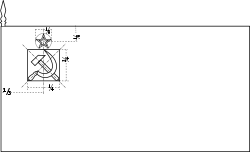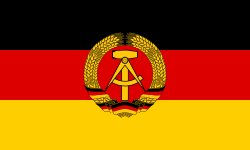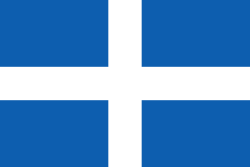Paolo Bettini
| Paolo Bettini | |
|---|---|
 Paolo Bettini (2013) | |
| Osobní informace | |
| Přezdívka | Il Grillo (Cvrček) |
| Datum narození | 1. dubna 1974 (50 let) |
| Místo narození | Cecina |
| Stát | |
| Výška | 169 cm |
| Hmotnost | 58 kg |
| Profesionální týmy | |
| 1997–2008 | Quick Step |
| Některá data mohou pocházet z datové položky. | |
| Přehled medailí | ||
|---|---|---|
| zlato | OH 2004 | silniční závod jednotlivců |
| Mistrovství světa v silniční cyklistice | ||
| zlato | MS 2006 | silniční závod |
| zlato | MS 2007 | silniční závod |
| stříbro | MS 2001 | silniční závod |
| Giro di Lombardia | ||
| vítěz | Lombardia 2005 | Giro di Lombardia |
| vítěz | Lombardia 2006 | Giro di Lombardia |
Paolo Bettini (* 1. dubna 1974 Cecina) je bývalý italský reprezentant v silniční cyklistice, mistr světa z let 2006 a 2007 a vítěz olympijského závodu 2004 (je vedle Hennieho Kuipera a Ercole Baldiniho jediným závodníkem v historii, který vyhrál individuální závod na OH i MS v kategorii Elite). Je také vítězem celkové klasifikace Světového poháru z let 2002, 2003 a 2004, vyhrál jednorázové závody Lutych-Bastogne-Lutych 2000 a 2002, Coppa Sabatini 2002, Milán – San Remo 2003, Clásica de San Sebastián 2003 a Giro di Lombardia 2005 a 2006 i etapové závody Kolem Valonska 2003 a Tirreno–Adriatico 2004. Získal jedno etapové vítězství na Tour de France, dvě na Giro d'Italia a pět na Vuelta a España, na Giru vyhrál bodovací soutěž v letech 2005 a 2006, nejlepšího celkového umístění dosáhl v roce 1998 (7. místo). Je také mistrem Itálie v silničním závodě jednotlivců z let 2003 a 2006, v roce 2008 vyhrál spolu s Joanem Llanerasem dráhovou Šestidenní v Miláně. V letech 2010 až 2013 byl trenérem italské cyklistické reprezentace. Je držitelem ceny Vélo d'Or a Řádu zásluh o Italskou republiku.
Externí odkazy
 Obrázky, zvuky či videa k tématu Paolo Bettini na Wikimedia Commons
Obrázky, zvuky či videa k tématu Paolo Bettini na Wikimedia Commons - Paolo Bettini v databázi Olympedia (anglicky)
- http://www.bikeraceinfo.com/photo-galleries/rider-gallery/bettini-paolo.html
- http://www.cqranking.com/men/asp/gen/rider.asp?riderid=1
Média použitá na této stránce
Olympic Rings without "rims" (gaps between the rings), As used, eg. in the logos of the 2008 and 2016 Olympics. The colour scheme applied here was specified in 2023 guidelines.
Olympic Rings without "rims" (gaps between the rings), As used, eg. in the logos of the 2008 and 2016 Olympics. The colour scheme applied here was specified in 2023 guidelines.
Autor: Fornax, Licence: CC BY-SA 3.0
South African Red Ensign from 1912 until 1951.
Autor: F l a n k e r, Licence: CC BY-SA 2.5
Flag of the Kingdom of Sardinia (1851-1861) and of the Kingdom of Italy (1861-1946). Use: Civil flag and ensign. In a governmental or a military context, the crowned version (see Crowned version) was always used (as State flag and naval ensign).
Autor: F l a n k e r, Licence: CC BY-SA 2.5
Flag of the Kingdom of Sardinia (1851-1861) and of the Kingdom of Italy (1861-1946). Use: Civil flag and ensign. In a governmental or a military context, the crowned version (see Crowned version) was always used (as State flag and naval ensign).
The civil ensign and flag of Belgium. It is identical to Image:Flag of Belgium.svg except that it has a 2:3 ratio, instead of 13:15.
(c) I, Cmapm, CC BY-SA 3.0
The flag of the Soviet Union (1955-1991) using a darker shade of red.

(c) I, Cmapm, CC BY-SA 3.0
The flag of the Soviet Union (1955-1991) using a darker shade of red.

This is the national flag of Belgium, according to the Official Guide to Belgian Protocol. It has a 13:15 aspect ratio, though it is rarely seen in this ratio.
Its colours are defined as Pantone black, Pantone yellow 115, and Pantone red 032; also given as CMYK 0,0,0,100; 0,8.5,79,0; and 0,94,87,0.Flag of Iran. The tricolor flag was introduced in 1906, but after the Islamic Revolution of 1979 the Arabic words 'Allahu akbar' ('God is great'), written in the Kufic script of the Qur'an and repeated 22 times, were added to the red and green strips where they border the white central strip and in the middle is the emblem of Iran (which is a stylized Persian alphabet of the Arabic word Allah ("God")).
The official ISIRI standard (translation at FotW) gives two slightly different methods of construction for the flag: a compass-and-straightedge construction used for File:Flag of Iran (official).svg, and a "simplified" construction sheet with rational numbers used for this file.
Flag of Australia, when congruence with this colour chart is required (i.e. when a "less bright" version is needed).
See Flag of Australia.svg for main file information.Flag of Portugal, created by Columbano Bordalo Pinheiro (1857-1929), officially adopted by Portuguese government in June 30th 1911 (in use since about November 1910).
Zelený pruh má znázorňovat většinové katolické obyvatelsto Irska, oranžový pruh reprezentuje protestantskou menšinu a bílý pruh uprostřed znázorňuje mír a harmonii mezi nimi.
Řecká vlajka (1822-1970 a 1974-1978)
Autor: Fornax, Licence: CC BY-SA 3.0
South African Red Ensign from 1912 until 1951.

































